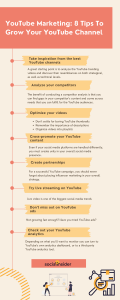As companies leave CMO positions unfilled, an evolution of how brands do business with consumers is underway. How brands respond gives us insight into their long-term growth strategy.
Shhh, I’m going to tell you a secret. Want to know the signal to a company’s long-term growth strategy?
Start monitoring the CMO role.
Lately, we saw a flurry of announcements that brands are eliminating, at least for now, the chief marketing officer (CMO) position. Notable brands such as Uber, McDonalds, Coca-Cola, JNJ, Taco Bell and Hyatt have either distributed the responsibilities or keep the position unfilled.
Here are some of the headwinds:
From ego to empathy
Once upon a time, we revolved our lifestyle around what brands produced and brand-centric messages. Today, the more empowered, interconnected and dynamic consumers have essentially turned the tables on this model. Consumers are now telling brands what to make, deliver and even how to do it. As a result of this evolution, the consumer became a greater part of the product and changing the way a company does business. “Listening” with empathy is vital to adapt for a brand’s continued growth.
The digital consumer-to-brand shortcut
The impact of this direct to consumer shortcut was gradual. Then suddenly, the momentum accelerated. As brand value shifted to consumers, it launched even the most talented CMOs, in-house teams and supporting agencies into unfamiliar territory. CMOs faced further challenges because they were not empowered to impact product, innovation or operational parts of the organization with their insights. Especially in digital transformations, empowering the right marketing leadership to navigate operations across the organization enables brands to pounce on new opportunities and defensive strategies.
Nextgen CMOs are real unicorns
CMOs have to be empowered with more than creative. Latest stats indicate that CMO tenures dropped to 43 months, less than half of CEOs. Also, CEOs are challenged with how to recruit and hire that magical mix of right and left brain experience and newly developed leadership skills. The actual opportunity and reputation costs of a wrong hire (and their respective team) can easily cost not only the CEO’s job, but tens to hundreds of millions in revenue. Perhaps this challenge is the most impactful justifications for the trend on deferring the hiring of CMO roles.
What are these signals?
Brands are evaluating 2020 plans into the next decade on growth strategies. What a company will do with the CMO role will make a statement. The background of this new executive could provide insight on the growth strategy. Some examples include:
Unfilled – Still undecided on growth strategy.
PR + Communication – Focus on storytelling and
Community + CX – Build or expand on the larger ecosystem of community, partnerships, advocates and the overall customer experience with the brand.
Innovation/Digital – Transformation not only of
Product – Discovering new revenue streams, expanding offerings.
Revenue – Optimize and enhance the pipeline.
Retention – Improve customer success and developing advocates.
Culture – Responsible in shifting the recruitment, optimization and retention of talent.
Who will be the voice of customers in the boardroom?
In a world where CEOs have started to embrace missions beyond quarterly shareholder value, relationships are the brand and community is the asset.
Let’s keep in mind marketing and the CMO role are entering another state of evolution. In some cases, it is a revolution. The hot debate on who serves as the “voice of the customer” in the boardroom will continue to, and should, rage on.
CEOs must be agile to match consumer needs. In the meantime, CMOs must think like a CEO to both grow and earn a seat at the boardroom. It’s entirely possible that the CMO position may evolve to be replaced as appropriate with a boardroom level role of Chief Growth Officer. This may not just be a title change, but set a new bar for operational and experiential customer whisperers.
More about the MarTech Conference
- Register for the MarTech conference in Boston, Sept 16-18!
- Stack evolution: Cancel those credit cards and put a process in place
- Buying martech is easy, managing the process to use it effectively is the hard part
- Making the leap to multi-touch attribution: How to get buy-in from sales, tech, leadership
Opinions expressed in this article are those of the guest author and not necessarily Marketing Land. Staff authors are listed here.
Marketing Land – Internet Marketing News, Strategies & Tips
(13)
Report Post







